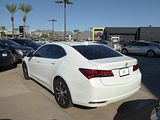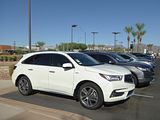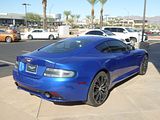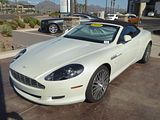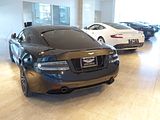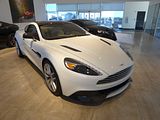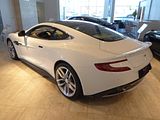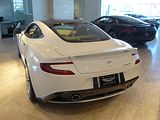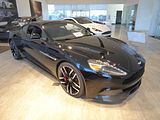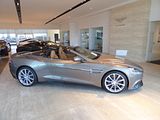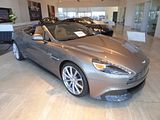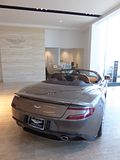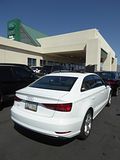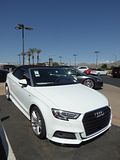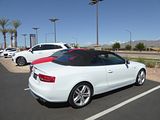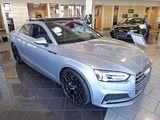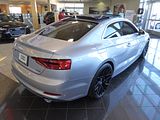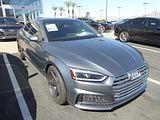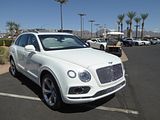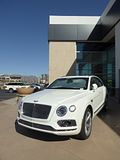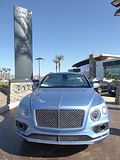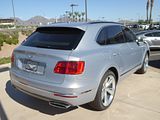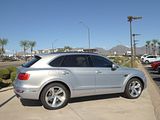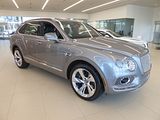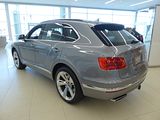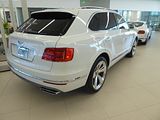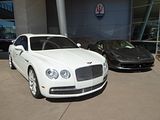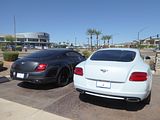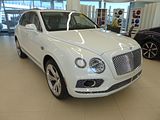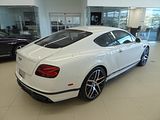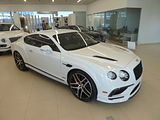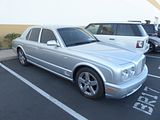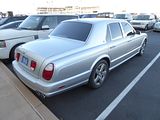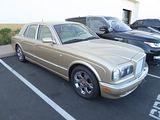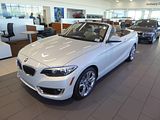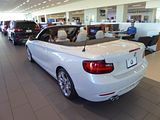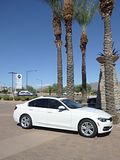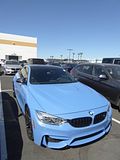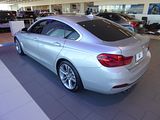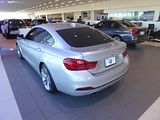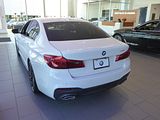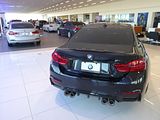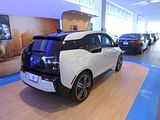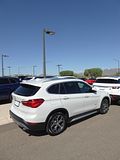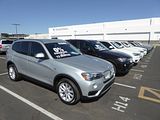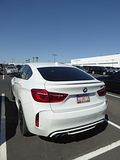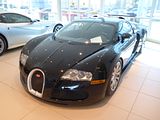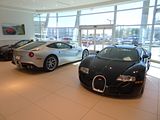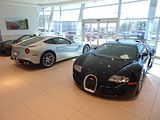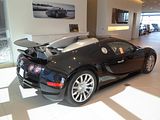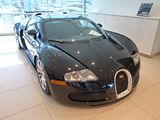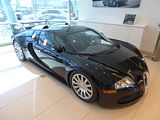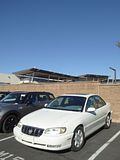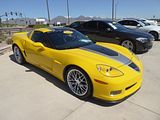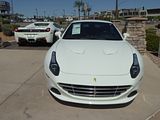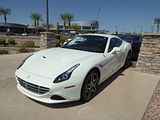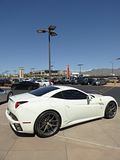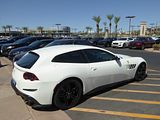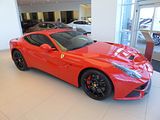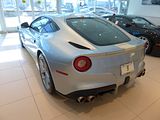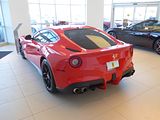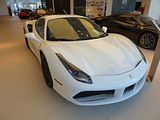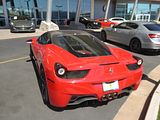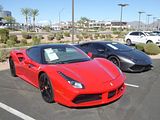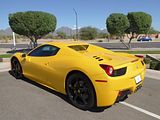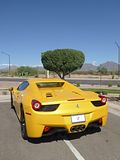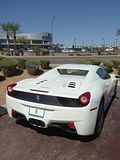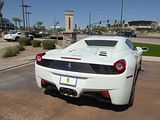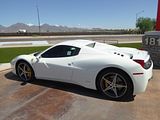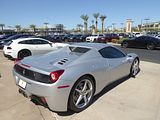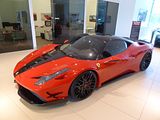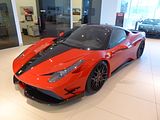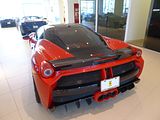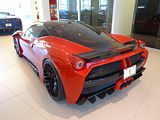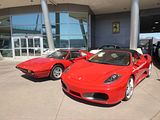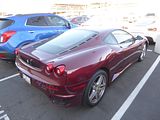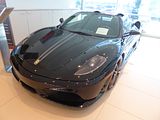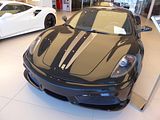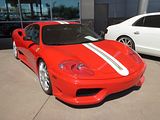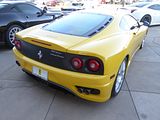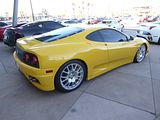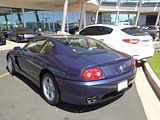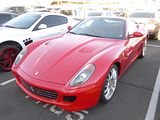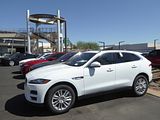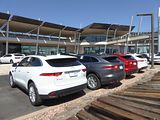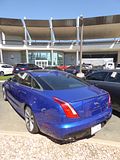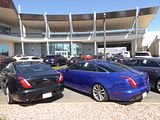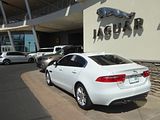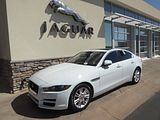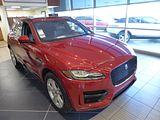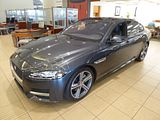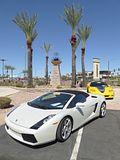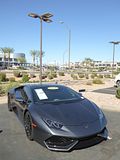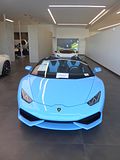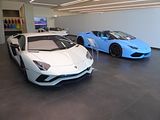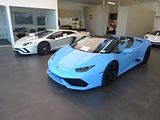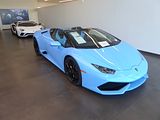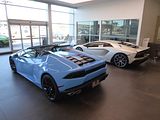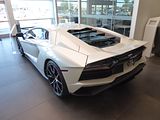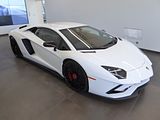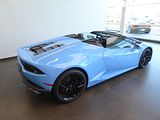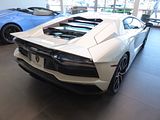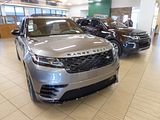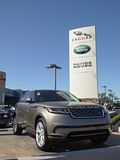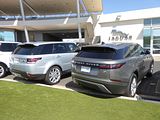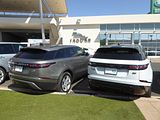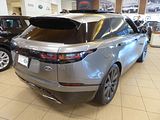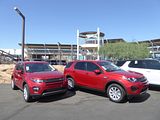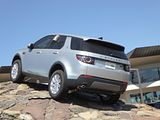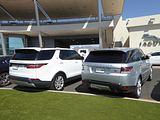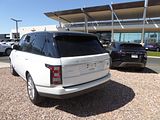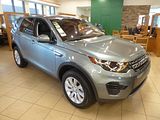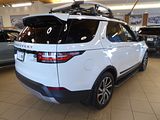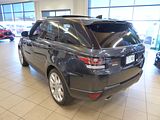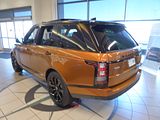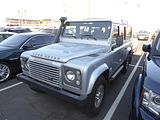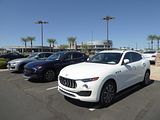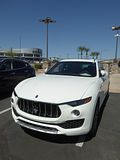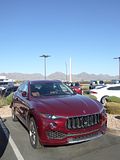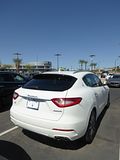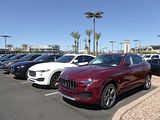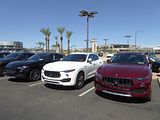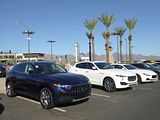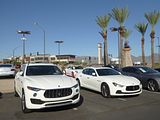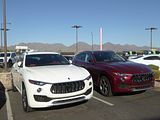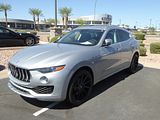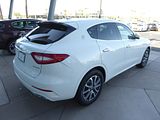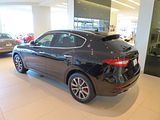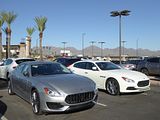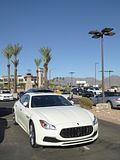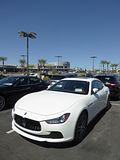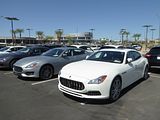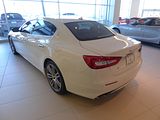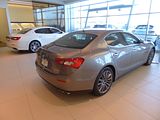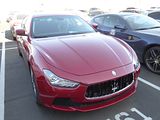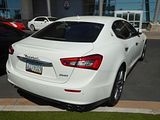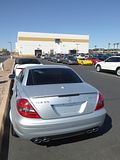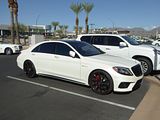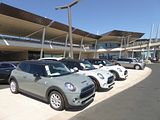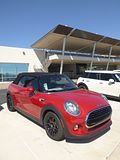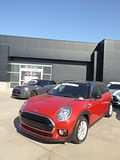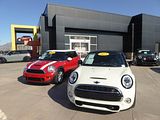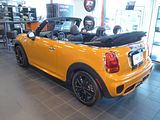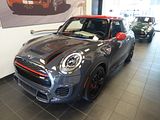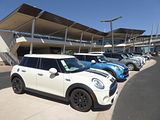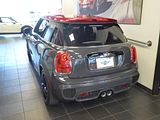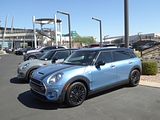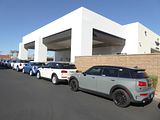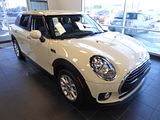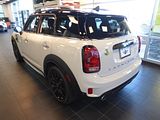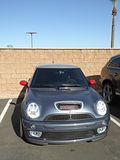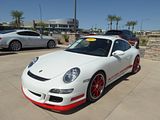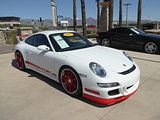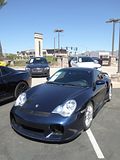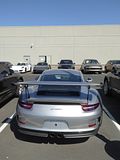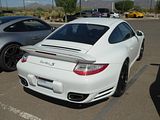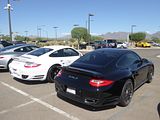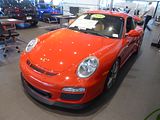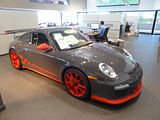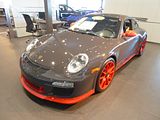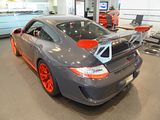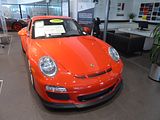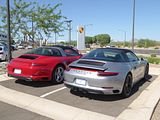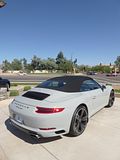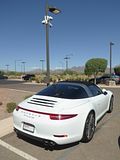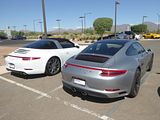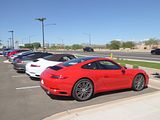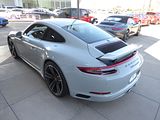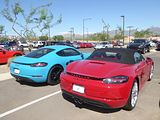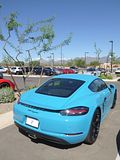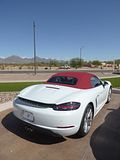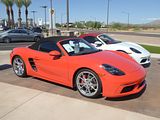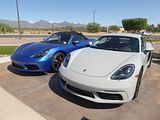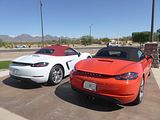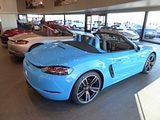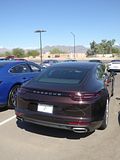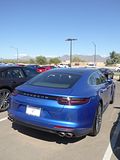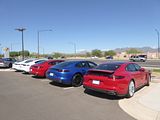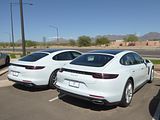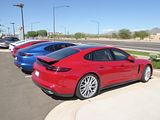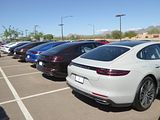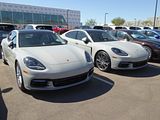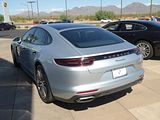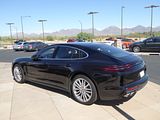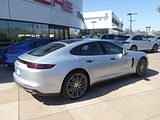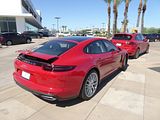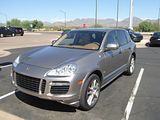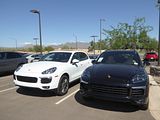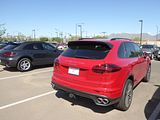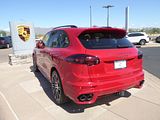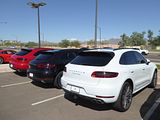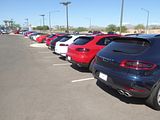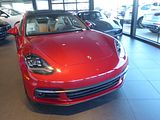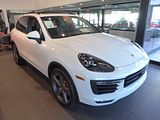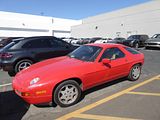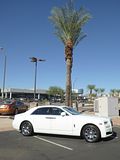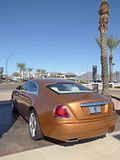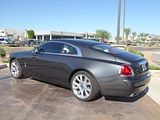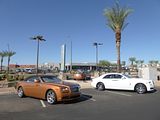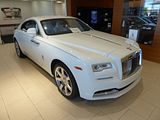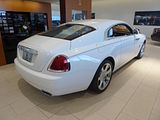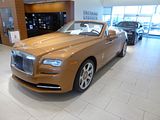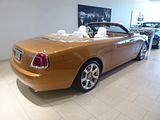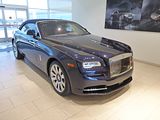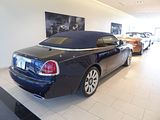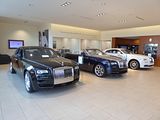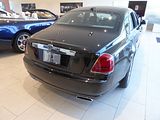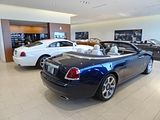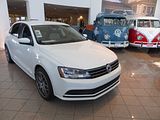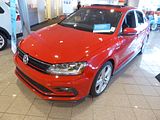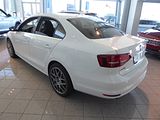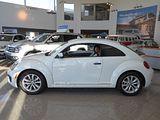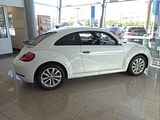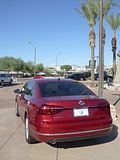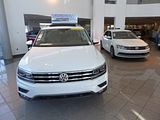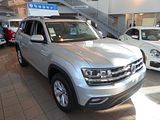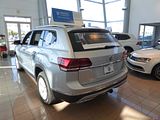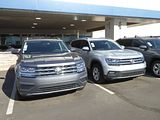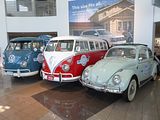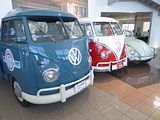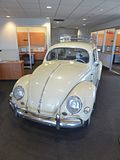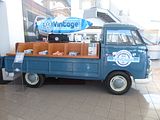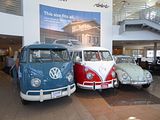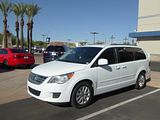We are all, to a greater or lesser extent, creatures of habit. Whilst many people, and I count myself among this type, relish new experiences and seeing what else this planet as to offer us, we also remember what is good, what we enjoyed, and are very happy to repeat it. Often many times. My vacation trips are a bit like this. Whilst seeing yet more of the world is always something that I enjoy, such are the pressures of corporate life these days that when it comes to planning a trip, there never seems as much thinking time, and having found a destination and a plan which “just works”, where I know the hotels to pick, and can get a wide selection of mostly interesting rental cars, with the guarantee of good weather, and at a budget-accommodating price, it is no surprise that I simply book up again. So, here for my late summer trip, I am once more in the Pacific South West of America, with time split evenly between the Los Angeles area and Phoenix in adjoining Arizona. And when there, it has become almost a tradition to pop in to the expansive Penske dealership site which surrounds the Penske Automotive Museum, and while away a couple of hours looking at a wide variety of mostly high-end cars in the showrooms and parked up outside. It is an unofficial tourist attraction of the Scottsdale area, so the sales staff are well aware, even before they hear an English accent, that many who cross the threshold are there simply to look, and they welcome this. Someone often greets you at the door, and then after a chat which can range from a very brief welcome to something rather longer, they leave you to enjoy what is on display. And that’s how it was this time, on my, well, umpteenth visit from over the years. Here is what was on show that attracted the camera.
ACURA
Alphabetically, the Japanese Acura brand is the first one to present, though their showroom is towards one end of the arc of buildings. It is one of the smaller ones, and is usually the one I don’t actually enter. This was no exception. Acura really do seem to have lost their way in recent times. The controversial styling has been toned down, as the message was clearly finally received that if cars don’t look good, many won’t bother to find out what they are like from behind the wheel. And the Acura models of a few years ago certainly did not look good, and, by all accounts, they were nothing special on the road either. There are two families of product: sedans and SUVs. none of which are exported to Europe, so they will appear unfamiliar to many. The range starts with the ILX, which is based on the previous generation Civic, clothed in a completely different body. It is aimed at those who want a small family sedan with a touch more luxury and quality finish, with the recently discontinued Buick Verano perhaps the most direct rival. Sales of the ILX have been steady, but far from copious.
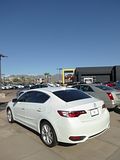
Mind you, the ILX is a super performer in the sales charts compared to the larger RLX, which really does struggle to find buyers. This large saloon – the latest of a generation of cars which used to be called the Honda Legend when sold in Europe – is by all accounts a decent enough car, but there is no USP of any sort to persuade potential customers to prefer it over a Lexus, or an Infiniti or any of the German prestige brands, as well as Volvo or even Jaguar.
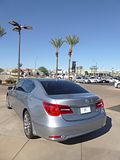
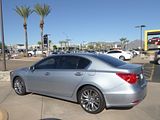
Sitting between the two in the range is the TLX. This car is aimed directly at European “sports sedans” such as the BMW 3 Series and Mercedes C Class, as well as the Infiniti Q50, and to a lesser extent the Buick Regal, among many other potential rivals. By all accounts, it gets far closer than its gawky predecessor did, but again, there’s no compelling advantage it has over any of them as to why you would choose one. And so, relatively few buyers do.
These days it is the SUV models that are more important, and which do indeed sell strongly enough to keep the brand viable. There are two in the range, the RDX and slightly larger MDX, and both have been on sale for around three generations now. They are quite hard to tell apart these days, as is the case with so many manufacturers. A number of both models, from the current and previous generations were parked up in the area outside the showroom.
ASTON MARTIN
A couple of years ago, a partition was put in between the Aston Martin and Rolls Royce areas, so they are now completely separate. That does mean the Aston Martin area looks a bit confined, as it is quite narrow, so the cars are parked parallel to the walls, in a couple of lines. As well as a couple of DB9 models parked up outside, cars on show inside were one of the last of the DB9s, the Vanquish in closed and Volante guises and the Rapide S.
AUDI
Like its German rival, whose showroom area is next in the line to that of the Ingolstadt marque, Audi is not quite the market force in America that it is in Europe. Some of the models – notably the Avant cars, as well as a lot of the diesel engine options are not offered to transatlantic buyers. That said, there are always plenty of cars with the four rings on their grille here, and this occasion was no exception. Sales of the A3 have increased significantly since the launch of a Sedan model, as Americans still favour this bodystyle. The Sportback body is only offered in America with the e-Tron powertrain and the 3 door hatch is not sold at all. The Cabrio is, though, and that was here as well as lots of Sedans.
Representing the middle of the range was the relatively new second generation A5 Coupe, which will be joined by the A5 Sportback, a model that was denied to Americans in its first generation form.
The A6 may seem like quite a large car to Europeans, but here it is does not come across that way.
There were rows of Audi’s Q model SUVs parked up outside, and this Q7, the largest of the line, featured in the showroom.
Final Audi of note was the R8, in its second generation, and still a head-turner, even if this version does not seem to have captured the imagination of press and public quite like the first one did.
BENTLEY
It is a reflection in the seemingly insatiable demand for SUVs in every segment of the market that the Bentayga – an SUV that still manages to look quite large even in America, where most automotive things are super-sized – is now the best-selling model in the Bentley range in America. And accordingly, there were more these in the showroom than the other models.
The salesman told me that Bentayga sales have almost completely wiped out those of the Flying Spur, and they don’t even have one of these on show all the time any more, but this time there was an older example parked up outside the back of the showroom.
Also here was the Continental GT Coupe, with lots of examples – both V8 and W12 cars – parked up outside to join those in the showroom.
Representing an older generation were a couple of examples of the Arnage, a twin of the Rolls-Royce-branded sibling, the Silver Seraph, and which was introduced in the Spring of 1998, the first entirely new designs for the two marques since 1980. This is a large car: over 5.4 metres (212 in) long, 1.9 metres (75 in) wide, and has a kerb weight of more than 2.5 metric tonnes. For a brief period it was the most powerful and fastest four-door saloon on the market. In a complete switch from tradition, whilst these cars had bodies built at the Crewe factory, the then owner, Vickers, decided that the car would be powered by engines built elsewhere. A number of potential engines were examined, including the GM Premium V engine, and a Mercedes-Benz V8 engine, before, in late 1994, Vickers selected a pair of BMW power plants. It was decided that the Rolls-Royce model would use BMW’s naturally aspirated V12 engine while the more-sporting Bentley model would use a special twin-turbo version of the 4.4-litre BMW V8, which was developed by Vickers subsidiary, Cosworth Engineering. On its introduction in the spring of 1998, the Arnage was available as a single model with the this 4,398cc twin turbo developing some 354 PS (349 bhp) and 420 lb·ft. During the takeover battle in 1998 between BMW and Volkswagen Group for ownership of Rolls Royce and Bentley Motors, BMW had threatened to stop supply of their engines if Volkswagen Group won. While the threat was later withdrawn in conjunction with BMW acquiring the right to manufacture the Rolls Royce marque at a new location, it was clear that Volkswagen could not accept the business and reputation risks associated with having their rival as a long-term business partner. Furthermore, customers were nervous about engine and part availability (of which there turned out to be no issue) and orders for new cars dropped precipitously. Volkswagen’s response was to prepare the old pushrod 6.75-litre 16-valve engine from the Turbo R for the Arnage, designed for the lighter and smaller BMW 32-valve V8 unit. Coupled with an outdated 4-speed automatic, the engine was extremely thirsty, and would not meet government-imposed emissions standards without hasty modifications. The revised version of the car was launched as the Arnage Red Label in October 1999. At the same time, but without the fanfare, Bentley made several minor modifications to the original BMW engined cars, and designated them as the “Arnage Green Label” for the 2000 model year. As part of the modification process, both Red and Green Label cars received stiffer body shells and larger wheels and brakes. The stiffer body shell was needed because of the extra weight of the British engine. The larger brakes were needed for the same reason. Despite the larger brakes, braking performance worsened with the extra weight of the 6.75 engine. The braking performance of the ’99 Green Label from 70–0 was 172 feet while the later Arnage T’s performance was 182 feet from the same speed. The PR department at Bentley pointed to customer demand as the driving force behind the reversion to the old two valve per cylinder 6.75-litre unit for the Red Label. This explanation appears to have been acceptable to all but a few of the motoring press who welcomed the return of the old unit after criticising the BMW motor as at best insipid and, at worst, underpowered. In reality, the outgoing BMW-powered Arnage was technically more modern, considerably more fuel efficient, and had 32 valves with double overhead camshafts, twin-turbo and Bosch engine management technology – as opposed to 16-valve, single turbo and a pushrod motor with less advanced engine management. The Red Label’s increase in motive power shaved less than a second of the zero to 60 mph time. However, the BMW twin turbo unit remained noticeably more agile and responsive from a driver’s perspective, due to its more responsive DOHC engine, better weight balance(maintaining a 51.1/48.9 weight distribution) and almost 600 lb (270 kg) lower curb weight. Ultimately the Green Label was more reliable and significantly less expensive to service in the long term. The key limiting factor of the BMW engine’s output was the ZF 5HP30 transmission which was not rated to handle more than the 413 lb·ft torque that the twin turbo engine was tuned to produce. In total only seven Arnage Green Label units were built, all of which were left-hand-drive versions. There was a final series of vehicles built in 2000 with the 4.4-litre BMW engine designated the Arnage Birkin, of which 52 units were produced and are distinguishable by their three-dial as opposed to five-dial instrument centre dashboard configuration. A long-wheelbase version of the Red Label was launched at the North American International Auto Show in 2001. The Green Label ended production in 2000. The Red Label models were replaced in 2002. In 2001, the Arnage RL, a long-wheelbase model, 9.8 in longer than the Arnage, was launched, the extra length added to the car at its rear doors and its C-pillar. With the standard Arnage model, the rear wheel wells butt up against the rear door frames, but with the RL they are a few inches further back. The overall effect is a larger rear area inside the car. Available only as a bespoke “Mulliner” model, each RL was customised to the desires of the buyer. The RL, however, was also the first of a new series of Arnages which would finally cure the Bentley Arnage of the reliability and performance deficiencies experienced following its forced deprivation of the modern BMW engines it was designed to use. The RL would also present a credible challenge to BMW’s attempts to revive the Rolls-Royce brand with its planned new model, the Phantom. The RL’s introduction saw the introduction of an entirely reworked version of the 6.75-litre V8 engine. Where the engine used in the Red Label was a quickly and less-than-completely-satisfactorily modified version of the Turbo RT’s unit, the RL featured an entirely reworked version of the old 6.75-litre V8. More than half of the engine’s parts were completely new, with Bosch Motronic ME7.1.1 engine management replacing the old Zytek system, and two small Garrett T3 turbochargers replacing the single large T4. This new engine developed 405 PS (399 bhp) and 616 lb·ft, and was said to be capable of meeting all future emissions requirements. Finally, the Arnage was powered by a modern twin-turbo unit with state-of-the-art electronic management system similar to the originally Cosworth-BMW unit developed for the Arnage in 1998. Perhaps ironically, what was essentially a new engine developed by Volkswagen Group engineers for the RL in 2001, was now producing the same sort of power as the original BMW V8 4.4 engine used in the first Arnage in 1998. Unfortunately, the development and testing of the revisions to the new engine were rushed by VW to meet regulatory requirements. As a result, the camshafts are prone to failure requiring extensive repair work to remedy In 2002, Bentley updated the Red Label as the series two Arnage R. This model was launched to contrast the Arnage T, which was developed to be more sporting. The Arnage R features two Garrett T3 turbochargers, as with the RL.The Arnage T, also from 2002, was claimed to be the most powerful roadgoing Bentley at its launch at the Detroit Motor Show. As with the Arnage R, there were twin-turbochargers, but tuned to develop 465 PS (459 bhp) and 645 lbf·ft. The Arnage T’s 0–60 mph time is 5.5 seconds; a top speed of 170 mph was claimed. The Arnage range was facelifted in 2005, with a front end resembling that of the new Continental GT. Production of the Arnage ceased in 2009.
BMW
A year ago, there had been a temporary BMW showroom in use, across a service road from the main site, whilst a complete remodelling of the one on site was taking place. When I visited in March 2017, I was able to see the new showroom, and it marked quite an improvement on what had been there before, with a lot more space and a lot more light in it. Cars are positioned in two parallel lines on one side of the building with a double row of sales cubicles then running parallel with these, but nothing feels crammed in. BMW is not the massive seller in the US like it is in Europe, and the range is not quite as extensive, but even so the Scottsdale/Phoenix area is an important one for the brand, and there are always lots of BMW models parked up around the back, as well as those on display inside.
Perhaps the most unusual spot from among them all was this Dinan modified E92 model M3. Dinan is a US company, and the focus of their efforts are mechanical upgrades to BMW models, so apart from the subtle badge on the back, there was nothing to tell you that this car was even more potent than the ones that come direct from BMW. A number of different upgrades and packages are offered, which include software changes, a revised free flow air intake and exhaust and a new throttle body, you would have to talk to someone to find out just what had been done to this particular car. Those with the maximum power upgrade generate a heady 451 bhp, up from 414 bhp, and 321 lb’ft of torque, also an increase, in this case from 295 lb/ft. The cars are compliant with the regulations of all 50 States.
With such a large range of cars offered, there can only be representative examples of some of what is available on display at any one time. Cars that were here included an M4, a 2 Series Cabrio, the ubiquitous 3 series, a 4 Gran Coupe and the new 5 Series.
The i3 is popular in the Phoenix Metro area and as well as a showroom car, there are usually several parked up outside, recharging. Many of these would appear to be given out as courtesy cars.
The first generation X1 was not sold in America, but the second model is. and this was on show here.
With a new X3 waiting in the wings, you can be sure that there will be even bigger discounts available on this long line of the outgoing model than you get at the end of the Model Year.
Final BMW to attract my camera was an X6M which was in the rear parking area. These expensive machines are rare in Europe, and not exactly a common sight even in a place where CO2 ratings do not matter like they do in Europe.
BUGATTI
Tucked away at the back of the Ferrari showroom, as this Veyron, definitely one of the rarer cars, and almost certainly the most expensive of all those on show here. Unlike most places where you see one of these beasts, there were no barriers around it, though the car was – rather prudently – locked. This is a relatively early example of the hypercar whose production run of 500 cars took several years, but like most of them, it has covered only a small mileage. I understand that the asking price was around $1.6 million, making it (a little bit) cheaper than the ones that are for sale in Europe.
CADILLAC
Parked up around the back was this Cadillac Catera, a car which will look familiar to Europeans, as it was essentially a federalised version of the Vauxhall/Opel Omega. The Catera officially went on sale in the United States in the autumn of 1996 as a 1997 model with a base price of $29,995. The model’s engine was a 3 litre 200 hp V6 unit manufactured at GM’s Ellesmere Port facility, and it used a front wheel drive layout. The GM 4L30-E automatic transmission was manufactured at GM’s plant in Strasbourg. Standard features included cloth interior, front bucket seats, dual-zone automatic climate control, AM/FM stereo radio with cassette player and eight-speaker sound system, airbags, anti-lock brakes, traction control, keyless entry, security system, alloy wheels, compact spare tire, and full instrumentation. Optional equipment included leather interior, heated seats, cassette player and CD player combination, Bose premium sound system, power sunroof, Homelink, OnStar, and chrome wheels. A Sport model was offered beginning in 1999 with eight-way power adjustable seats, heated front seats, 17-inch wheels, driver’s seat memory, audible theft-deterrent system, three-channel garage door opener, high-intensity discharge headlamps, and a rear spoiler. The Catera received a facelift in 2000 with revised nose, tail, wheels, interior trim, mirrors, optional HID headlamps, stiffer suspension settings, and side airbags. The Catera was marketed with the tagline “the Caddy that zigs,” and launch advertisements featuring supermodel Cindy Crawford — who spoke to an animated duck-like character called “Ziggy”. Cadillac described the character: “like Catera, Ziggy was hatched in Germany and has the sole mission of bringing fun to the luxury of Cadillac. He was one of six mythical, beakless, footless martins or ‘Merlettes’ in the Cadillac Crest before we gave him big feet, a giant beak, and turned him around. He’s quite a departure from his five brothers who have been part of the Cadillac Crest since the days of the crusades when the crest was the proud symbol of Le Sieur Antoine de la Mothe Cadillac Family. “Ziggy” was featured through model year 1998. In 1997, John Tinker, a producer of television medical drama Chicago Hope, was inspired by a pun in a Catera commercial saying “Who is Lisa Catera?” (in response to the Catera tagline “Lease a Catera”) and introduced a new character named Dr. Lisa Catera, played by Stacy Edwards. Coincidentally, the main demographic of Chicago Hope viewers were exactly the same demographic Cadillac hoped to attract with the Catera, and Cadillac/General Motors management responded extremely positively to the reference, becoming the main advertiser on the show and giving Edwards a complimentary three-year lease on a Catera. In one episode, Edwards’ character states “When you can’t zig, you zag,” a reference to another Catera tagline. Unlike the Omega which Europeans thought was rather good, the Catera struggled on the US market, finding little favour with traditional Cadillac buyers and not much more from those who might have bought a rival product. Around 95,000 were sold over a 5 year period. You don’t see them very often now.
CHEVROLET
Another GM car to catch my eye was this Corvette ZO6 from 2008. This particular car is based on the C6 generation of the Corvette, the model which ran from 2005 to 2013. The Z06 arrived as a 2006 model in the third quarter of 2005 and is the lightest of all Corvette models. The Z06 was equipped with the largest-displacement small-block engine ever produced, a new 7,011 cc engine codenamed LS7 produced 505 bhp @ 6300 rpm and 470 lb⋅ft (637 N⋅m) @ 4800 rpm of torque, the most powerful naturally aspirated engine put into a production car from General Motors. In addition to the larger displacement engine, the Corvette Z06 has a dry sump oiling system, and connecting rods made out of titanium alloy. The frame of the Z06 is constructed from aluminium, saving 136 pounds (61 kg) over the standard steel frame. Other weight saving measures such as balsa wood/carbon fibre composite floors and a magnesium alloy engine cradle were used. The Z06’s body differentiates itself from the standard Corvette with its larger front and rear fenders and an intake inlet scoop on the front bumper. The front fenders are constructed with carbon fibre and the rear fenders contain ducts to aid in cooling the rear brakes. The Z06 weighed 3,130 lb (1,420 kg), giving it a weight to power ratio of 6.2 pounds per horsepower, allowing it to achieve a fuel economy of 15 mpg‑US in the city and 24 mpg‑US on the highway. The Z06 was the official pace car for both the 2006 Daytona 500 and the Indianapolis 500 race. Car and Driver recorded a 0-60 mph time of 3.6 seconds and 1/4 mile in 11.7 seconds at 125 mph in October 2005. A pre-production/pre-official model was recorded by AMS against the 483bhp Porsche 996 GT2 with a slower 0-60 time of 4.3 seconds and a 0-to-400-metre time of 12.7 seconds in May 2004. It could be ordered with 1LZ, 2LZ, and 3LZ trim packages. For 2011 the Z06 carbon edition was introduced, which carried over multiple parts from the ZR1 including carbon ceramic brakes, active suspension, and other carbon fibre aerodynamic pieces. Only 500 Z06 Carbon Editions were made. Actual production numbers were much lower. In total only about 250 were Carbon Editions and 250 were optioned the same but did not have the carbon bonnet. In 2012 and 2013, these options could be ordered through the Z07 package on the Z06.
FERRARI
More than with most marques on the site, you get a good mix of brand new and used Ferrari models here. The showroom has space for only a limited number, but there are quite a few more that are grouped together right outside, in an area which is usually in a mix of shade and bright sun, making things challenging for the photographer, though if you stay long enough, as the sun moves around some cars either go into full shadow or full sun. The entry level model – for now, as a successor has been announced, but not yet released – is the California T and there were several of these as well as the earlier California version on site.
Both of the V12 models from the current range were well represented too, the GTC4 Lusso and F12 Berlinetta.
And completing things from the point of brand new Ferrari models you can buy was the 488 GTB
And so we come to the back catalogue. Most recent of these were a number of 458 models, with both the Spider and Italia present.
This one was in the showroom, and had been the recipient of a number of modifications. Some will love the result, others may just scratch their head…….
Precursor to that model was the F430 and there was one of those here as well, along with the rather special Scuderia models.
Back a generation again, and you get to the 360 range. It was one of the Challenge Stradale cars that I came across. This was a low production track day focused car based on the 360 Modena. From a handling and braking performance perspective was the equivalent of adding a FHP (Fiorano Handling Pack) to the 360, which was available for V12 models such as the 550, 575 or F599 but never separately for the V8’s. It was inspired by the 360 Modena Challenge racing car series so the focus was primarily on improving its track lapping performance credentials by concentrating on handling, braking and weight reduction characteristics, which are essential in pure racing cars. Ferrari engineers designed the car from the outset with a goal of 20% track day use in mind and 80% road use. With only a small 20 bhp improvement in engine power from the Modena (and boasting an improved power-to-weight ratio) the Challenge Stradale accelerates from 0 to 100 km/h (62 mph) in 4.1 seconds according to Ferrari, four tenths faster than a Modena, but bald figures do not paint the full picture. For the enthusiastic driver the differences are truly staggering; genuine systematic improvements were achieved to the setup and feel of the whole car. Throttle response from the digital throttle was ratcheted up and feedback through the steering wheel was enhanced. The responsiveness of the controls, the balance of the chassis, the braking performance and the driver feedback all contribute greatly to the overall driving experience. Thanks to CCM brakes borrowed from the Enzo, some lower weight parts and a FHP handling pack, the Challenge Stradale was able to claim an impressive 3.5 seconds improvement per lap of its Fiorano circuit compared to the Modena (the target was 2.5 seconds). In total, the Challenge Stradale is up to 110 kg (243 lb) lighter than the standard Modena if all the lightweight options are specified such as deleted radio, lexan (plexiglass) door window and Alcantara fabric (instead of the leather option). As much as 74 kilograms (207 lb) was taken off on the car by lightening the bumpers, stripping the interior of its sound deadening and carbon mirrors and making the optional Modena carbon seats standard. Resin Transfer Moulding was utilised for the bumpers and skirts, a carry over from the Challenge cars which resulted in lighter bumpers than on the Modena. The engine and transmission weight was slimmed down 11 kg (24 lb) through the use of a smaller, lighter weight sports (yet still stainless steel) exhaust back box and valved exit pipes. The Challenge Stradale also got Brembo carbon ceramic brakes as standard (which later became standard fitment on the F430) which shaved 16 kg off the curb weight and improved handling by reducing unsprung weight and completely eliminating brake fade. Cars fitted with the centre console stereo option, sub speaker box behind the seats and glass side windows re-gained approximately 30 kg over the best selected options (from a weight perspective). Challenge Stradale models are much sought after these days, and when they do come up for sale, they command a huge premium over the regular 360 Modena cars.
The first of the two seater V8 models was represented by both a 308 GTS and the later 328 GTS. Compared to more recent offerings, these appear so small these days. They are also among the best looking of the lot, with function having to take precedence over form with the latest cars as they strive to comply both with ever more regulations as well as needing to be able to harness their extra power in a way that drivers can handle.
Older V12 cars on site included a 456 GT and a 599 GTB.
JAGUAR
Jaguar and Land Rover share a showroom, with more space given to the latter than the former, a reflection of the likely sales split between the two marques. Most sales interest is being generated by the F Pace, and it was that car which attracted my camera as well as the still elegant XJ and one of the smaller XE cars.
LAMBORGHINI
The showroom contained three current models, two of them the Avendator, in Coupe and Roadster guise, as well as a Huracan Spider. Parked up outside was a Gallardo Spider.
LAND ROVER
Sometimes it seems to take forever to get a new model from one market to another, and on other occasions, it is very much quicker than that. The Jaguar XE, for instance, took an age to arrive in America, but Land Rover have lost no time in getting the Velar across the Pond. and there were several examples of this well-received model on display.
The rest of the range was well represented, too, with the Discovery Sport, Evoque, the 5th generation Discovery and the Range Rover and Range Rover Sport all here. There is an “off road” display area out of the back of the showroom, and Land Rover always have cars at some improbable looking angles on this construction to remind everyone of their true off-road prowess.
Also out the back, in the area where older cars are to be found were a couple of examples of the Defender, in 90 and 110 guises. These were not sold in America, but are now able to be imported under the 25 year rule which means that cars lacking federal certification can be imported on an individual basis.
MASERATI
The Maserati showroom is shared with Ferrari and only ever contains a few cars, but there are always long lines of models parked up outside. Indeed, I know of no other place where you are likely to see quite so many Maserati in one place, and this is definitely where to come if you want to see pretty much all the range of colours that are offered. As with Bentley and Porsche, the market switch to SUVs is evident here, and so there were a lot of the Levante on show.
The saloon cars were also extremely well represented, with plenty of both the Ghibli and the larger Quattroporte on show.
MERCEDES-BENZ
There is not a Mercedes showroom within this complex, as a rival dealer has one, literally across the street. On this occasion, I did not wander over to have a look to see what they had in stock, so the only Mercedes models presented here are a couple of pre-owned ones which were in the Penske complex. Needless to say, these were high-end models, both AMG cars, and were an SLK55 AMG
and an S63 AMG.
MINI
The MINI showroom is distinctive, with its bright colours on the outside. as well as in, as well as having a car displayed up high outside. There is not much room for cars inside, but there are always long lines of MINI models to be seen here, especially around the back, so, as is the case with some of the other brands, you can see almost every available colour as well as the different body styles of the range. Most numerous were the 3 and 5 door hatch models, which are still probably the cars most think of when you mention the brand. These were joined by a number of the open-topped Cabrio cars as well.
The larger Clubman and Countryman models were also evident, both of them now in their second generations.
Tucked away around the back was an example of a first generation MINI John Cooper Works GP, the last Mk I MINI variant to be produced using the supercharged Tritec engine. This was sold as a light-weight, quasi-race-prepped John Cooper Works model, hand-finished by Bertone in Italy. It was offered as a limited-production run of 2000 cars during the 2006 model year, with 444 of those originally intended for the UK market, although ultimately, 459 were sold, even though the price was somewhat eye-watering. The GP featured more bolstered Recaro front seats but had no rear seats, which along with reduced sound-deadening, removal of the rear wash-wipe system, optional air-conditioning and radio, and other weight-reduction steps, resulted in a weight saving of around 40 kg (88 lb) compared to a Cooper S. Mechanically, it featured a less restrictive intercooler, recalibrated engine management, high-volume injector nozzles, and a freer-flowing exhaust system. Extra cooling capabilities lets the supercharged engine run longer on cooler temperatures for better track performance. This resulted in an output of 218 hp from a faster revving engine. Additionally, the car had enhanced braking, suspension, and a smooth under-body for better aerodynamics. The whole geometry of the rear axle was modified with parts from the Mini Challenge race car to enhance the handling. In place of the rear seats there is a metal bar for a stiffer chassis performance. The car also offered many unique styling points, such as the red door mirrors, a carbon fibre rear spoiler, unique body kit, bespoke, 2 kg lighter four-spoke alloy wheels, and specialised badging. Available in just one colour scheme (Thunder Blue with a Pure Silver roof), each car was individually numbered and featured a decal on the roof along with a plaque on the dashboard. Although they were costly when new, they have held their value very well, and rarely come up for sale even now.
PORSCHE
There are always lots of Porsche models to look at, with not just lines of new models but plenty parked up around the servicing area as well. The 911 dominates this latter part of the site, with all manner of the more unusual models to be found tucked among the more recent and commonly sighted cars. Included In this category at the time of this visit were a 996 GT3, and several “high end” 997 cars including a GT3 and Turbo S, as well as a GT3 RS.
The showroom contained a rather nice GT3 RS as well as a 2010 GT3
Needless to say. there were plenty of examples of the latest 911.2 generation 911 here.
Also much in evidence now are the 718 versions of the Boxster and Cayman.
The second generation Panamera has only been on sale a few months here, but the numbers are starting to increase at the showroom, even if they are not yet exactly a common sight on the road.
Lines of Cayenne and Macan models remind where the volume is for Porsche these days. There was an interesting contrast with a first generation Cayenne here, too, which shows how the styling which rather shocked us when the car was launched has been softened throughout the model’s evolution.
Rather more of a classic was this 928 model.
ROLLS ROYCE
The new Phantom has yet to reach American shores, which means that the current range comprises three models: Dawn, Wraith and Ghost. All three were here, with several examples both in the showroom and parked up outside.
VOLKSWAGEN
The Volkswagen showroom is right at the end of the line, as far away from Porsche as you can get. It is one of the smaller ones, reflecting the fact that VW is nothing like the market force in America that it is in Europe. Many of the cars that we get in Europe are not offered to American buyers, and there are some that the US have, which we do not. Cars which will be familiar include the Golf, sold in a smaller number of varieties than in Europe, but with the top models certainly featuring in the range, including the Golf R.
The Jetta is offered to Europeans, though few buy it, whereas this is the brand’s biggest seller here. Manufactured in Mexico, the latest car was criticised by the press for the cost take out measures, yet sales went up. During its life, some notable upgrades have occurred, including the reinstatement of independent rear suspension.
Once the “must have” fashion statement car, the second generation of the reborn Beetle is far from the sales darling it once was, and VW are reported to considering whether there is a future for the model. Hatch and Cabrio models are still offered.
Although the name is shared, the US market Passat models are different from those seen in Europe. Built in Chatanooga, the American market model is sold only as a saloon, and is larger and softer than the German built cars. The distinctive 5 cylinder engine has been banished and there is a 2 litre turbo four now that is used in the cars we know better. I’ve driven a couple of them and thought it a worthy competitor in a class where standards are now pretty high.
The second generation Tiguan has finally reached America, nearly two years after its European reveal, and there were several of these on display here. A 7 seat option is coming, too.
For those for whom the Tiguan is not big enough. VW America now have the Atlas, a 7 seater SUV that finally gives them a direct competitor to the likes of the Toyota Highlander, Honda Pilot, ford Explorer, Kia Sorento and Mazda CX-9.
The VW showroom usually contains a number of classic models, with the same cars having been on show for a number of years. Notionally, they are all for sale, though the prices are such that it is clear that little effort is made to clear them away. That said, my favourite of the ones I used to see here, a bright orange 181 Trekker (known as the “Thing” in America) has not been here for a while, so I am guessing that someone did make a serious offer. That leaves a collection of Type 2 and Beetle models, all beautifully presented, as ever.
Final model I spotted – outside – was a Routan, not a common sight. This was a seven-seat minivan and rebadged variant of the Chrysler RT platform, with revised styling, content features, and suspension tuning from the fifth-generation Dodge Grand Caravan and Chrysler Town & Country. The Routan marked the start of Volkswagen’s business strategy to offer additional vehicles specially developed for the U.S. market. It resulted from a partnership that began in 2005 between Volkswagen and DaimlerChrysler. Prior to the agreement, Volkswagen had no minivan model for the United States or Canadian markets. VW’s intent with outsourcing production the Routan to Chrysler was to avoid the significant expense of developing its own family-sized minivan. VW announced in an early 2008 projection that the company intended for the Routan and other models to help achieve significant expansion of U.S. sales. The Routan was Volkswagen’s first van offered in North America since discontinuation of the Volkswagen Eurovan in 2003. Manufactured alongside the Chrysler and Dodge minivans at Windsor Assembly and marketed just in the United States, Canada, and Mexico, the Routan debuted at the 2008 Chicago Auto Show and went on sale in the United States in September 2008. The Routan’s minivan variants include the Dodge Caravan, Ram C/V, Chrysler Town & Country, and Lancia Voyager — and by 2009 was ranked as the 13th best-selling automotive nameplate worldwide, with over 12 million sold. Production of the Routan was halted in 2012 due to high inventory levels, despite having a production contract that ran through 2014. In January 2013, Volkswagen announced there would be no 2013 retail model, but held open the possibility that development may resume with a potential 2014 model. The 2013 Routan was reserved for fleet purchasers, and 2,500 were produced by Chrysler during the calendar year, primarily reserved for rental car companies and other fleets, with limited availability to the public at dealer showrooms. This also held true for the 2014 model year Routan. Automotive industry analysts were not surprised by VW’s decision to drop the Routan because buyers had no reason for selecting the Routan over the similar Dodge Grand Caravan or the Chrysler Town & Country, and the Routan’s base price of nearly $28,000 was far more than the basic $21,000 Grand Caravan, while the Routan’s list of equipment was less than included on the upscale Town & Country.
As ever, I enjoyed the time I spent on site. The staff I spoke struck just the right balance between politely enquiring if they could help and backing off, leaving me to enjoy the cars. There was plenty to see, as the pictures evidence, with a mix of the familiar and the less well known. Don’t be surprised to be reading another report like this in due course when I make the inevitable return visit on my next trip to the Phoenix area.


